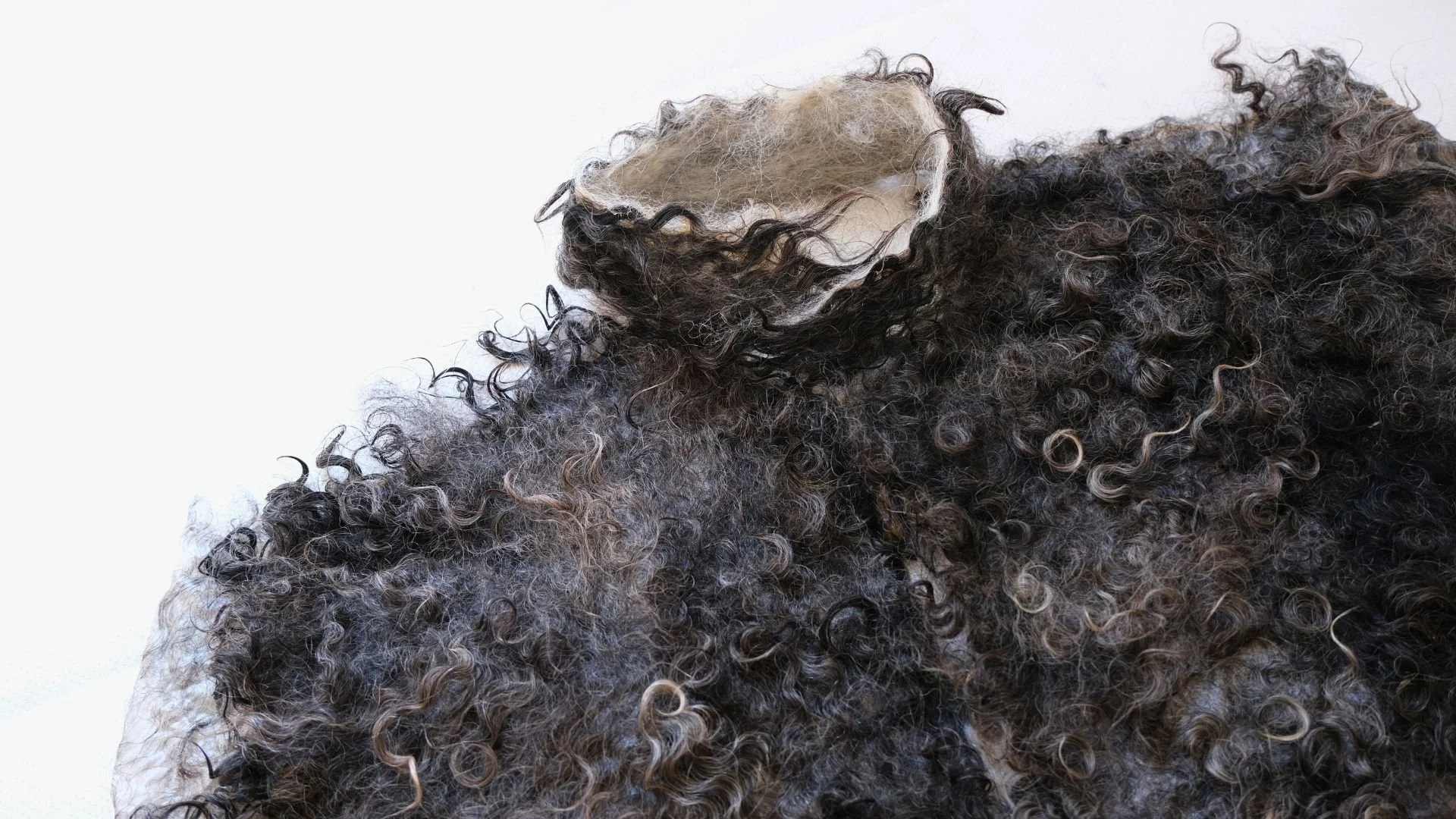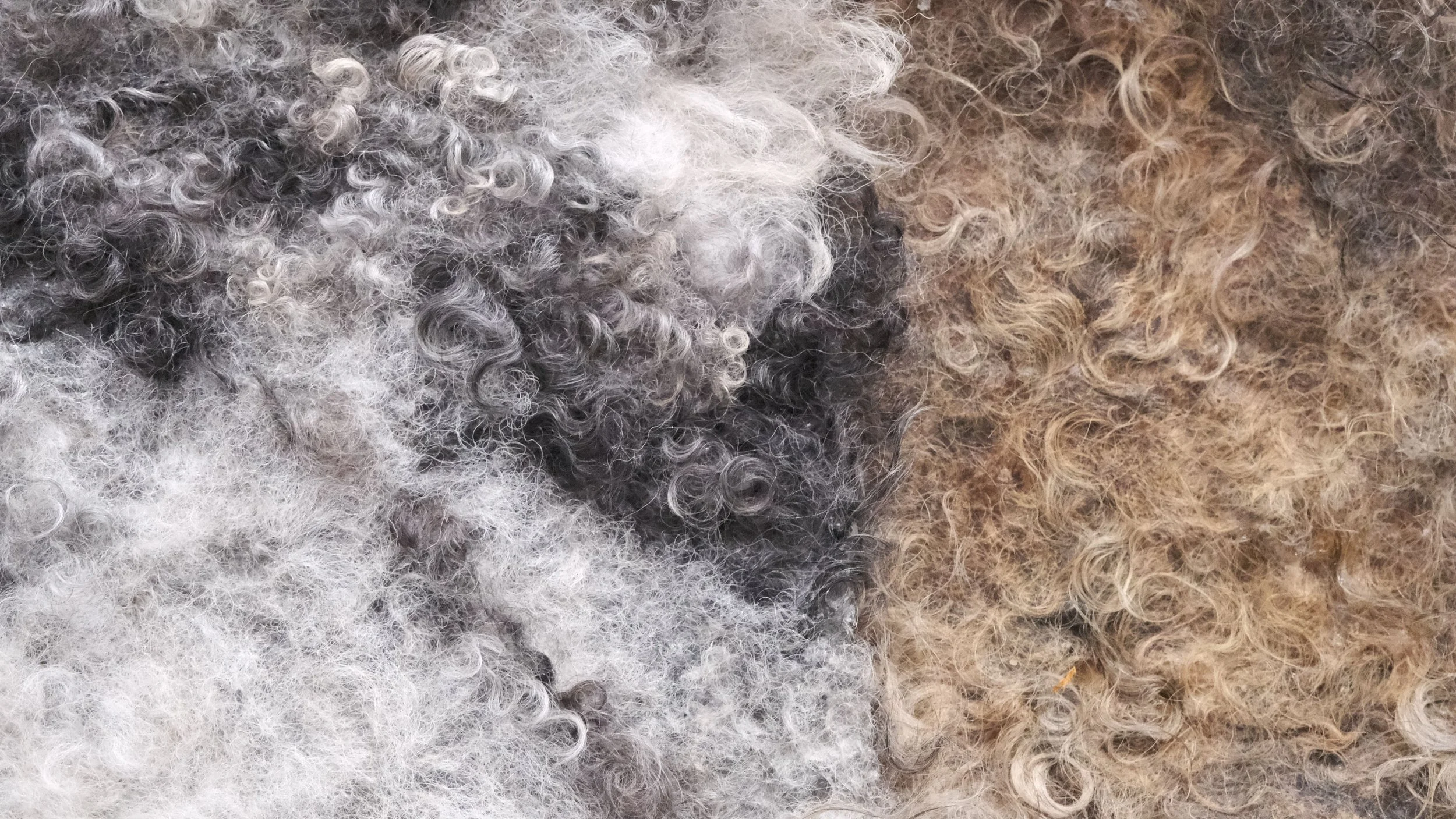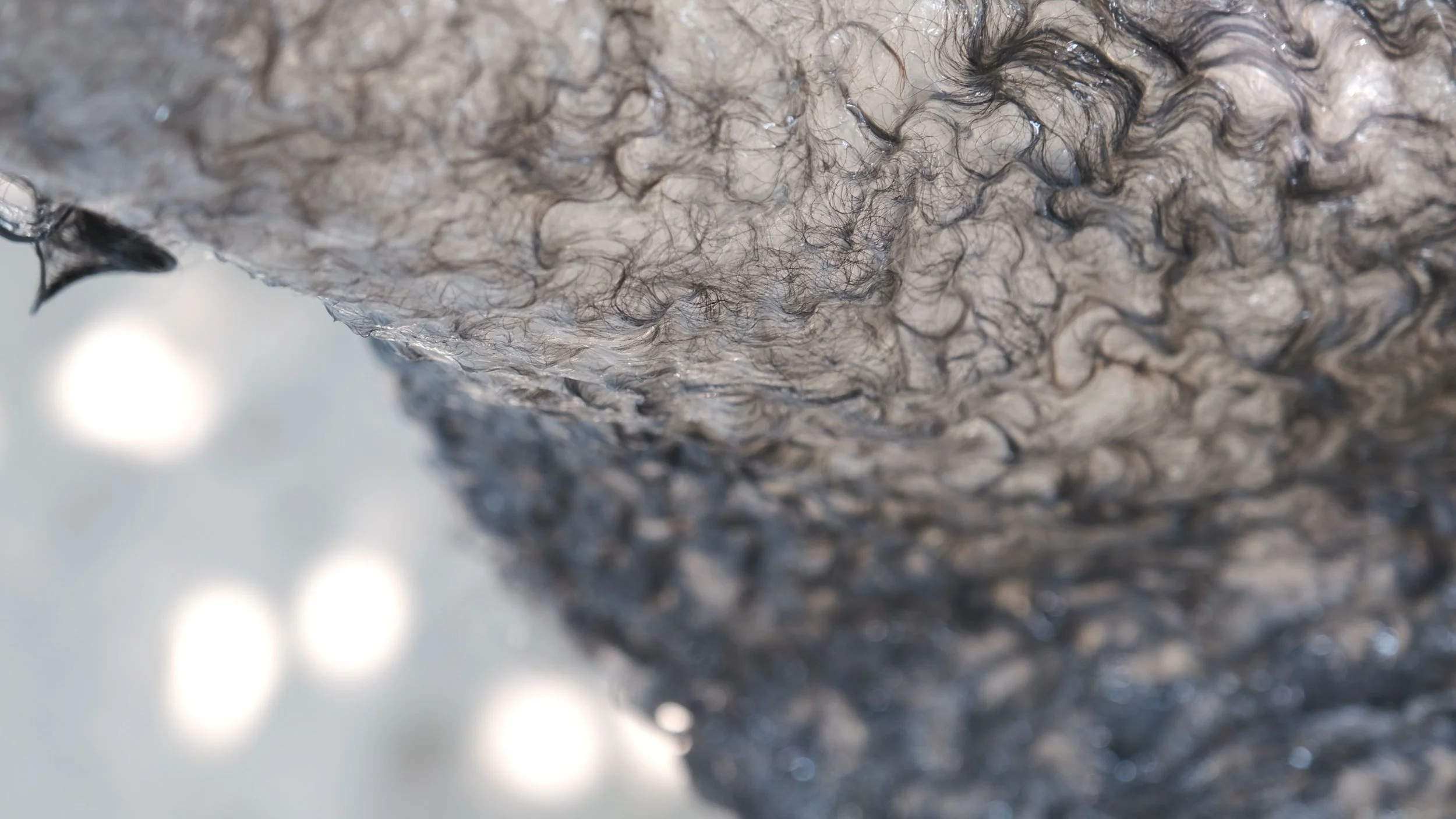Talent Talks: Shushanik Droshakiryan
Reimagining wool as a living material, a companion in transformation. Bio-designer Shushanik Droshakiryan draws from biomaterial research and ecological ritual to shift fashion from a linear, extractive system toward one rooted in regeneration. The shepherd garment is crafted from the soft, curly locks of the Gotland sheep, lined with the coarse wool of the Karakul sheep.
Her work positions local found wool not as waste but as a material of rich cultural and ecological value. Ancient yet futuristic, wool becomes a site for tactile speculation and material storytelling. Droshakiryan maps the Dutch wool ecosystem as a landscape of forgotten value, restoring complexity to fibres often dismissed as low-grade. Each garment is an artefact of a ritual tied to material cycles, where folds and textures challenge aesthetic uniformity and offer new material futures.
Could you please introduce yourself?
I am Shushanik Droshakiryan, founder and lead designer of Venus In Fury, a one-woman lab based in Amsterdam. I work at the intersection of biomaterial research and fashion, focusing on transforming fashion from linear, exploitative systems into circular, nature-driven ones. For the past three years, wool has been my primary material for experimentation — a constant, 24/7 companion in my lab. My aesthetic vision is rooted in a new era of Bio-Luxury: nature-based material design for fashion, where value is defined by responsible practices and bold aesthetics. Within this context of luxury, wool is my crucial element — a fibre I see as a connector, resembling both human and animal.
My lab is unpredictable and uses the language of controversy in design. It functions like a tiny electron that goes against the systematic flow of the fashion industry by working with matter (material) and fashion as complementary living systems. This system is rooted in research and a holistic design methodology that considers the entire life cycle of my materials. Importantly, this philosophy is an active critic, an action. It's not an idea or an observation; I never begin my work with a preconceived notion. I actually start with having no idea of what I’m doing. I believe this attitude distinguishes my lab from other design labs in Amsterdam.
Could you please tell us something about your graduation collection/project?
Although my graduation was not recent, my education remains the foundation of my work today. I completed a Master’s in Fashion at Yerevan State Academy of Fine Arts in Armenia, where my final project was a unisex collection of 12 garments inspired by 18th-century French gowns. Both men and women wore folded garments, structured as transformations of the male formal shirt with a collar. The collection, crafted from my grandmother’s curtains, received the award for Best Graduation Project.
This classical, post-Soviet education gave me strong discipline but left me dissatisfied with existing fabrics, which eventually pushed me toward creating my own materials. The real turning point came later in Amsterdam at WAAG TextileLab, where my research on Dutch wool waste led to my solo exhibit at the Teatrum Anatomicum Psychedelic Feminine. The contrast between the rigid, tradition-focused training in Armenia and the open, experimental culture of Amsterdam created a cultural “crush” that now defines my practice. I stand between these worlds: one rooted in tradition, the other in radical experimentation. This tension is where my work regenerates new narratives and materials.
Which materials, techniques, programmes and/or applications are you mostly interestedin? Please specify your use and views on wool
My work pioneers a new vision of sustainable luxury, shifting Dutch wool’s image from low-value waste to a high-value material for fashion. Luxury has long been associated with exclusivity, branding, and environmental cost. I challenge this paradigm by redefining luxury as inherently ephemeral: the shepherd's garment handcrafted from wool is one of my 1st experiments. I position wool as a crucial luxury material — not only because of its cultural memory and tactile richness, but because it can be transformed into a luxurious fur garment.
To challenge the aesthetic monotony often associated with biomaterials, which tend to stay within neutral, organic tones, I offer odd combinations: wool in combination with charcoal, feathers, turmeric, chocolate, rich textures, folds, and surfaces that expand its expressive potential. I want to reposition wool as both ancient and futuristic — a fibre capable of carrying fashion into a new era of Bio-Luxury.
The exhibition you are a part of looks into the meaning of regeneration. What does regeneration mean to you and your work?
My first project at WAAG TextileLab explored the Dutch wool ecosystem, transforming wool waste into a value-driven, interdisciplinary design system. With wool as both material and narrative, I work to redefine its potential and reveal its textural complexities. Can fuzzy, low-quality wool fibres become luxurious materials?
For me, regeneration begins with wool. Wool is both ancient and futuristic: a fibre that carries cultural memory while holding the potential for new material futures. Sheep and wool are crucial to landscapes and biodiversity — the wool ecosystem is deeply interwoven into our living environment. In my lab, I approach wool not as a fixed resource but as a living, regenerative medium — one that can be reimagined through conflict, experimentation, and transformation. By positioning my practice against the destructive logic of fashion, I treat wool as an ecological partner: it regenerates itself, regenerates value in waste, and makes design an active, narrative-driven system.
How do you perceive the meaning and importance of community within the fashionfield?
Community in fashion is a complementary network, not a competition. In my experience, collaboration across disciplines is the key to community: scientists, ecologists, material researchers, and wool farmers are all essential partners. Only through these alliances can fashion become a living system, grounded in ecological realities and capable of generating meaningful, material-led solutions.
How do you view the future of fashion? And your own role therein?
“The allure of fashion is an indefinite déjà vu, captured in the momentum of now.”
Working in fashion means working with time. Just as historic eras defined their own sense of time through garments, I aim to shape a new temporal dimension for bio-based material design. Fashion’s future is ephemeral and regenerative — a ritual tied to material cycles rather than endless production. My role is to challenge aesthetic monotony and linear systems by creating complex garments that are wearable artefacts — functional-aesthetic forms that articulate the new principles of fashion and Bio-Luxury.


